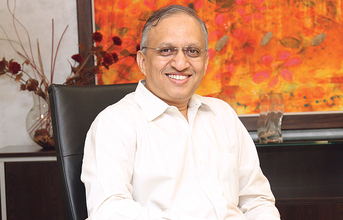
Can you please tell us about your experience of implementing Industry 4.0/Smart Factory?
The implementation of Industry 4.0 / Smart factory is a Work in Progress for us. Godrej is present across a wide range of businesses and thus the array of manufacturing capabilities is vast. From light engineering and mass manufacturing set ups to heavy engineering and low volume, as well as from ultra-precision in in humongous jobs ranging from small to high precision requirements. In all these scenarios, we are increasingly deploying technology that ranges from low cost automation, robotics, IoT enabled machines, etc. in varying scales, and are deriving great benefits. Our factories are smarter than before as we continue our journey and fully evolve into Smart factories.
How does the technology make sense in Indian context where labour is available in abundance?
The judicious use of technology to achieve the right balance is the answer. Technology is an enabler to improve productivity, yields, quality and safety and thus should be embraced and nurtured. India is presently in a good position. Good demographics (large population of young Indians between the age group of 25-28), supported by good policies promoting skilling and entrepreneurship, good thrust on building infrastructure, a massive programme to uplift the lives of the poorest, provides huge opportunities for gainful employment. Doing this with the aid of technology can only make things better.
Even a business such as food delivery, which is very much human dependent, enjoys spectacular results when enabled with technology. The same goes for manufacturing. Technology will aid economic development and spur new types of jobs. A better output with the aid of technology will move the jobs to India and will provide more opportunities. The skill gap needs to be bridged.
Technology upgradation calls for disruption as well. What disruption does Smart Factory technologies cause at the operations level? How do you deal with such disruption?
Disruption caused by technology is reducing the reliance on humans to be able to achieve better, repeatable and reliable results. And this is happening across sectors like travel (ticketing), navigation, distribution, entertainment, health and thus will engulf all spheres of life. Disruption in all the cases described above has provided more opportunities of livelihood by creating new sets of jobs.
Disruption is a good word. It only changes the way we do things. Best way is to adapt to the new reality - embrace change, learn new skills and teach them to others. So even disruptive technological change can spur creative jobs where those who are good at it, can lead purposeful, meaningful jobs by enabling others to adopt new technologies.
The way to deal with disruption is to view it as a new reality and have the mindset of embracing and mastering it. The future smart factories will be productive, cost effective and sustainable. Smart factories will ensure that consumers and manufacturing units both benefit from low cost but highquality products and bring larger good to the society.
Any technology upgradation calls for new skills set. How to deal with the challenge of skill upgradation?
One way is to create excitement about newness. Humans are said to resist change. Actually, they resist inconvenience. So, the best way is to prepare the minds of people to encourage adoption of new technology. Besides a change in mindset, it is needed that we provide the right kind of skilling. Helping people learn the new technology and getting them to realise the benefits of it would be the right approach.
Adapting to new technology has been done before, so I have the confidence that it can be done again. Knowing what to teach and making it interesting to learn will overcome this challenge.
END


























